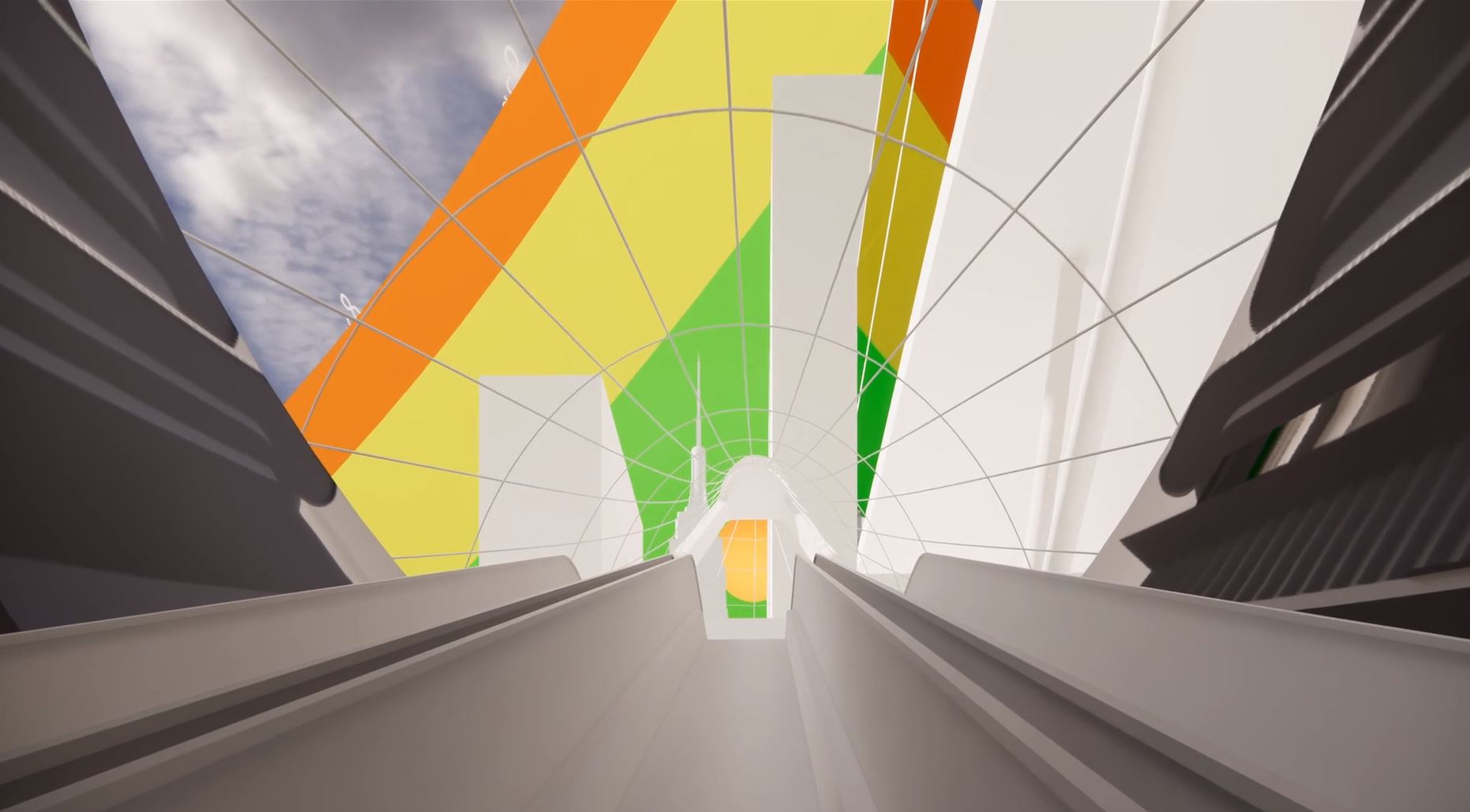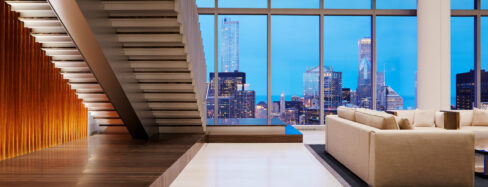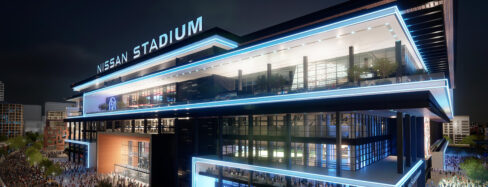Virtual Reality, or VR, is beginning to change the way we interact with the world. As the noted poet Rainer Maria Rilke posited, “The future enters into us in order to transform in us long before it happens.” It’s a revelatory observation, but also a pragmatic one. We need to know today to prospect and equip for tomorrow. The architectural lighting industry is no exception and at HLB we are primed and ready.
This article will explain how HLB is integrating XR into its daylighting design process. If you are asking yourself, “What is daylighting and what is XR?” there is no need to worry. This article will continue with a broad introductory overview that touches on science and philosophy, and a few core concepts, before getting into the nitty gritty of the technology.
This next statement should make your head explode: “All reality is virtual.”
We see the world through a veil. The 3D scene in front of us is the result of 2D projections cast upon the back of our eyes. It is not actually there; it is in our brain. Following this observation, all the 2D projections we use to simulate, design and build our 3D worlds are also not reality, but mental constructs.
Consider this tidbit. In 2015, Donald Hoffman, an American cognitive psychologist studying consciousness, visual perception and evolutionary psychology delivered a TED Talk titled “Do We See Reality as It Is?” In his presentation, Hoffman explained how our perceptions have evolved to hide reality from us, remarking that “it’s as if we all wearing headsets designed to filter reality in order to impart a survival advantage.” His survival-based conclusion forwards evolutionary theory, but beyond it is an idea that is both perplexing and spooky: “something exists when we don’t look, and it’s not spacetime.”
So, if it is not reality, what is it? If we buy into the message of Plato’s “Allegory of the Cave,” that human perception cannot derive true knowledge, then we are shackled. We concede to spending our entire life in a “cave” mistaking shadows for reality. Now enter technology – the driving force that shapes civilization and us with it. More specifically, enter Extended Reality (XR), a collection of tech-enabled veils commonly referred to as the “reality continuum.” Physical reality is the foundational layer, upon which there are several extensions that can be added. First is augmented reality, or AR, which adds digital objects to physical reality, typically in a live view. Apple’s Measure app on the iPhone is a perfect example of this. Next is VR, a system that gives the user a fully synthetic experience with no sense of the real world. Over the last several decades we’ve seen a number of multi-projected environments called Cave Automatic Virtual Environment, or C.A.V.E, but today headsets and smartphones seem to be the emergent VR media. Consumer-priced VR headsets are just now hitting the market and were in the top 20 most popular gifts last year. Last is mixed reality, or MR, which combines elements of both AR and VR. If you are a movie buff, think of Tom Cruise interacting with a multi-dimensional display screen in Minority Report. This technology is being incorporated into “smart glasses” that are intended to complement or replace our handheld smartphones with the big wave soon to hit the consumer market.
If you have taken the dive into a VR digital environment, you’ve felt the immersive quality that makes them feel so real. It is the result of when we become engrossed in a total environment with images, sounds and other stimuli, and are free to move with six degrees of freedom (6DoF). It is the ability to change position (forward/backward, up/down, left/right) and orientation (rotation/pitch/roll) about three perpendicular axes (normal/transverse/longitudinal). Three degrees of freedom (3DOF), the tracking of rotational motion only, allows movement in one spot but is still enough to affect immersion. Once immersion happens, other powerful perceptual experiences follow. Teleportation allows migration within and between VR worlds, without crashing into objects that would otherwise present barriers in a physical space. It allows the viewer the freedom to edit their experience.
Let’s segway into HLB’s current use of VR. Our firm committed to a first-generation VR set-up about two years ago. The general plan was to jump in and tread as we learned to swim. As the leader of this initiative, I’ve taken a Marshall McCluhan-esque approach: “First we build the tools, then they build us.”
Daylighting, the art and science of using natural light for environmental illumination, relies heavily on spatial and temporal analysis parameters. We have developed a VR daylighting design toolset that contains several methods for modeling the geometrical aspects of the sun, including their assessment from various observer positions, over an annual period. We are also working on tools and techniques to quickly probe a 3D model for glare from key task positions. As a longtime proponent of the use of physical scale models and manual tools in daylighting design, I have found that XR can follow similar paths of approach and inquiry within a virtual world. You can still coexist with the building, in the same space, but you can be any size, teleport to any location and have any tool in hand. It is empowering, and at the same time extremely efficient. There is a significant decrease in the amount of time it takes to attain a complete and intuitive 3D understanding of objects, light and space. There are efficiencies at multiple levels. Learning can be a group process, rather than parallel individual processes. The result is a higher level of realization and more time for design.
VR labs, typically part of large product development programs, are now standard practice in the automotive, consumer products and aerospace sectors. These facilities are useful because they enable rapid and safe testing at much lower cost compared to functional physical prototypes. The same approach is true for architecture and buildings. HLB’s Daylighting Team is using real projects as the test bed, and the results are proving that these tools have the power to re-shape our workflows. At each step of the way we are asking three key questions: “What benefits does it bring to the design process and final product? How can it save time and effort? How can it be used to affect more effective client communication?” The answers are checking all the boxes. The clients who have experienced the benefits of our developing toolset are all in. We’re still discovering, developing and rolling out new tools and methods, so it is all very much in process.
In predicting how XR will extend this transformation to the architectural industry, among other industries, I’ll use this analogue. Imagine an infinite, but shallow body of water with a funnel-shaped drain at center to which the water the speeds to as it moves closer. You are in a boat and have been paddling away from the center at good speed, but in this moment realize you are decelerating. It’s an often-used description of a Black Hole, and I think we’re experiencing a similar, and inevitable, gravitational pull towards these exciting technologies.


